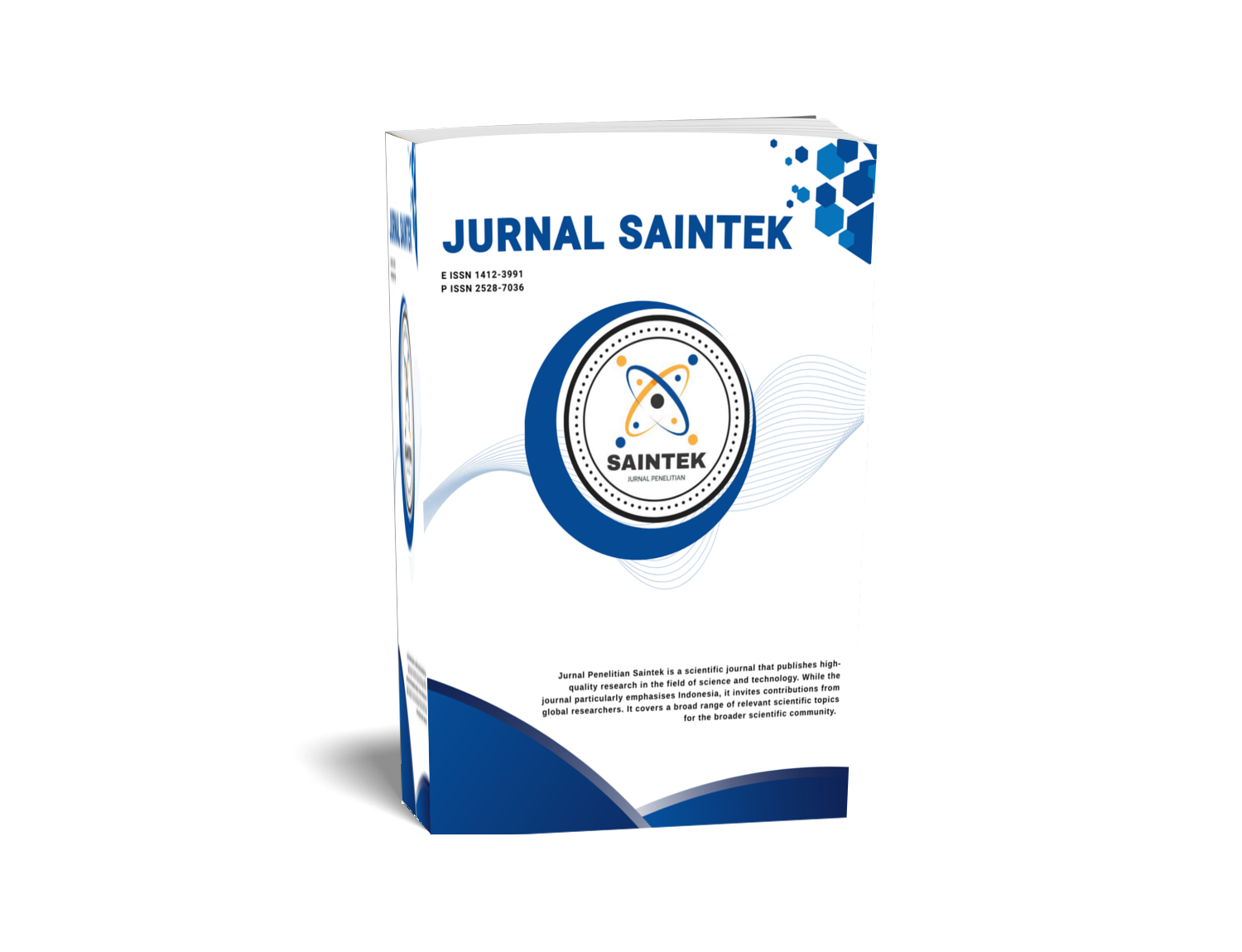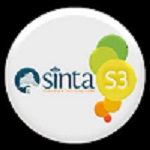THE EFFECT of 4-METHOXYBENZALDEHYDe AND CYCLOHEXANONE MOLE RATIO VARIATION ON THE SYNTHESIS of 2-(4'-METHOXYBENZYLIDENE)CYCLOHEXANONE USING MICROWAVE ASSISTED ORGANIC SYNTHESIS METHODS
DOI:
https://doi.org/10.21831/jps.v22i1.15322Keywords:
Synthesis, MAOS, 2-(4'-methoxybenzylidene)cyclohexanoneAbstract
This research aims to determine the effect of mole ratio variation and mole ratio which produce maximum yield. Synthesis of 2-(4'-methoxybenzylidene)cyclohexanone was done through Claissen Schmidt condensation with NaOH as catalyst. Variation of 4-methoxybenzaldehyde:cyclohexanone mole ratio were 1:1, 1:2, 1:4, 1:6, and 1:8. 2-(4'-methoxybenzylidene)cyclohexanone could be synthezied using MAOS methods for 120 seconds. Synthesis product was identified by TLC, TLC scan, spectroscopy IR, and spectroscopy 1H NMR. The result of this research showed that the variation of 4-methoxybenzaldehyde:cyclohexanone mole ratio had an effect on the synthesis of 2-(4'-methoxybenzylidene)cyclohexanone. It was proven by the different of yields which have been produced. Variation of 4-methoxybenzaldehyde:cyclohexanone mole ratio 1:1, 1:2, 1:4, 1:6, and 1:8 produced 2-(4'-methoxybenzylidene)cyclohexanone 0%; 59.272%; 64.122%; 46.782%; and 45.555% in yields respectively. The mole ratio of 4-methoxy-benzaldehyde:cyclohexanone which gives the maximum yield is 1:4.
References
Budimarwanti. (2009). Penyediaan senyawa berkhasiat obat secarasintesis dengan analisis retrosintesis. Prosiding Seminar Nasional Penelitian, Pendidikan dan Penerapan MIPA. FMIPA UNY, Yogyakarta.
Bruice, P. Y. (2007). Organic chemistry (5th ed.). USA: Pearson Prentice Hall.
Handayani, S., & Arty, I. S. (2008). Synthesis of hydroxyl radical scavengersfrom benzalacetone and its derivatives, Journal of Physical Science, 19(2), 61-68.
Kuhnert, N. (2002). Microwave-assisted reactions in organic synthesis-are there any non-thermal microwave effects? Angew. Chem. Int. Ed., 41(11), 1863-1866.
Liu, H., & Zhang, L. (2011). Microwave heating in organic synthesis and drug discovery. Shanghai: State Key Laboratory of Drug Research, Shanghai Institute of Materia Medica, Chinese Academy of Sciences.
Nurcahyo, A. D. (2014). Pengaruh Variasi rasio mol sinamaldehida-aseton pada sintesis 6-fenil-3,5-heksadien-2-on (Sinamalaseton) menggunakan metode MAOS (Microwave Assisted Organic Synthesis) (Skripsi tidak diterbitkan). FMIPA UNY, Yogyakarta.
Pavia, D. L., Lampman, G. M., Kriz, G. S., & Vyvyan, J. R. (2001). Introduction to spectroscopy. Philadelphia: Sauders College.
Putri, S. A. (2009). Aplikasi reaksi canizzaro terhadap benzaldehida dan p-Anisaldehida dengan kondisi tanpa pelarut (Skripsi tidak diterbitkan). FMIPA UNS, Surakarta.
Sekhon, B. S. (2010). Microwave-assisted pharmaceutical synthesis: An overview. International Journal of PharmTech Reasearch, 2(1), 827-833.
Silverstein, R. M., Webster, F. X., & Kiemle D. J. (2005). Spectrometric identification of organic compounds (7th ed.). New York: John Wiley & Sons Inc.
Wardencki, W., Curylo, J., & Namiesnik, J. (2005). Green chemistry-current and future issues. Polish Journal of Evironmental Studies, 14(4), 389-395.
Yuliyani, N. R. (2016). Pengaruh variasi rasio mol sikloheksanon-benzaldehida pada sintesis benzilidinsikloheksanon (Skripsi tidak diterbitkan). FMIPA UNY, Yogyakarta.
Downloads
Published
How to Cite
Issue
Section
Citation Check
License
Who Can Submit?
Any individual may submit an original manuscript for consideration for publication in Jurnal Penelitian Saintek as long as they hold the copyright to the work or are authorized by the copyright owner(s) to submit it. Authors retain initial ownership of the copyrights to their works prior to publication, except in cases where, as a condition of employment, they have agreed to transfer copyright to their employer.
User Rights
Jurnal Penelitian Saintek is an Open Access journal. Users are granted the right to read, download, copy, distribute, print, search, or link to the full texts of articles, provided they comply with the conditions of the Creative Commons Attribution-ShareAlike License 4.0 (CC BY-SA 4.0).
https://creativecommons.org/licenses/by-sa/4.0/
Author Rights
Authors retains copyrights.
Jurnal Penelitian Saintek by http://journal.uny.ac.id/index.php/saintek is licensed under a Creative Commons Attribution-ShareAlike 4.0 International License.









